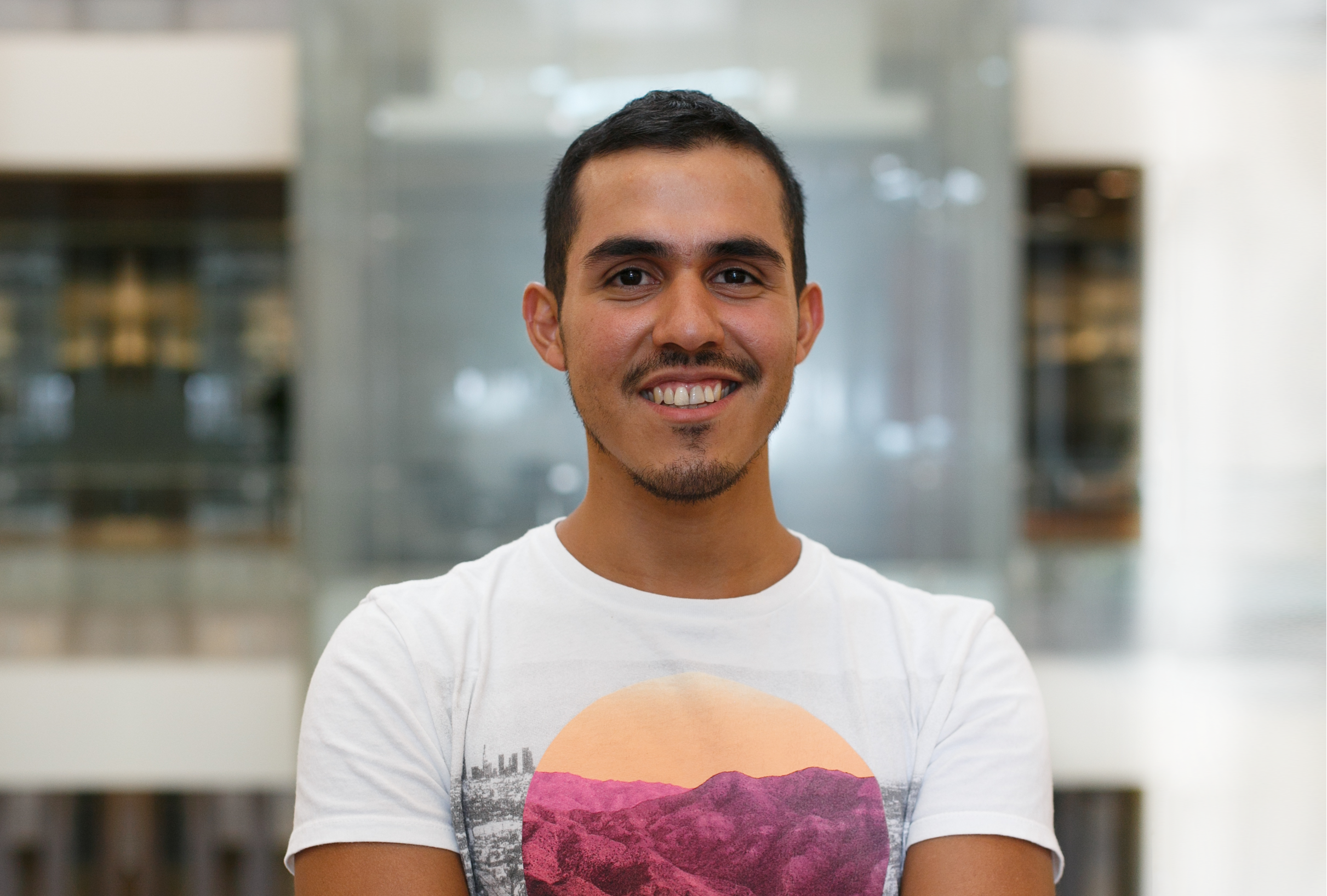KAUST Ph.D. student wins Magnetism as Art Showcase Award

KAUST Ph.D. student José Efraín Pérez won the Magnetism as Art Showcase People’s Choice Award at the 62nd Annual Conference on Magnetism and Magnetic Materials in 2017. File photo.
-By David Murphy, KAUST News
José Efraín Pérez, a Ph.D. student based in the University's Sensing, Magnetism and Microsystems Laboratory, won the Magnetism as Art Showcase People's Choice Award at the 62nd Annual Conference on Magnetism and Magnetic Materials (MMM) 2017 for his artwork entitled "Magnetic Nanobeacon." Efraín Pérez, who is supervised by Professor Jürgen Kosel, won the award at the MMM's annual showcase which was held in Pittsburgh from November 6 to 10, 2017. His colleague Zahra Albu presented and accepted the award on his behalf.
Of his win, Pérez said,"I felt surprised to be selected as a winner. While I thought that my picture was good, it was also only one of many exciting entries presented."
Pérez's winning artwork represents magnetic nanowires embedded in a nanoporous template.
"Part of the template was dissolved in order to reveal the nanowires; however, due to air drying, the nanowires collapsed and formed 'beacon' structures in the process," he outlined.
“Magnetic Nanobeacon,” an image created by KAUST Ph.D. student José Efraín Pérez, won the Magnetism as Art Showcase People's Choice Award at the 62nd Annual Conference on Magnetism and Magnetic Materials 2017 in the U.S. The image represents magnetic nanowires embedded in a nanoporous template. Image by and courtesy of José Efraín Pérez.
Exploring nanostructures
The Sensing, Magnetism and Microsystems (SMM) group is a research group in the division of Electrical Engineering. The SMM group's members work on the development of micro- and nano-transducers with a focus on magnetic devices that offer various advantages in many applications due to remote control and sensing capabilities. The group is driven by applications in different fields ranging from multifunctional sensors over energy harvesters and biomedical systems to spintronic devices.
Pérez's research focus is biomedical applications of nanostructures. He wants to use these nanowires as a scaffold for the promotion of differentiation of human mesenchymal stem cells.
"Ideally the nanowires would be left in a free-standing vertical configuration that only occurs when the drying process is tightly controlled. The nanowire 'bed of nails' on which the stem cells are cultured provides a complex mechanical stimuli scaffold that has proven to be enough to drive mesenchymal stem cell differentiation into osteoblasts. In addition to this, due to the magnetic nature of our nanowires, we apply an external magnetic force that translates to a mechanical one in order to further stimulate this differentiation process," Pérez noted.
Related stories:
- KAUST Ph.D. student wins 3M's 2017 Invent a New Future Challenge
- KAUST student wins best poster at Water Arabia Conference
- Ph.D. student wins PACE Challenge
-
CCRC team wins first place honors in Bahrain

